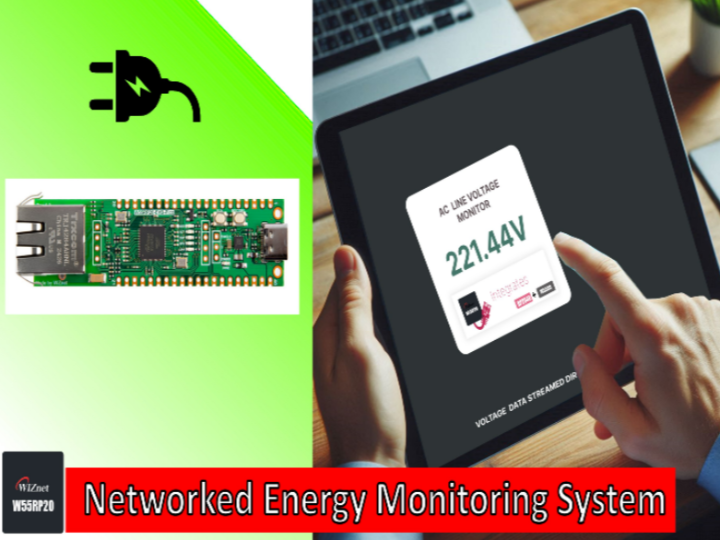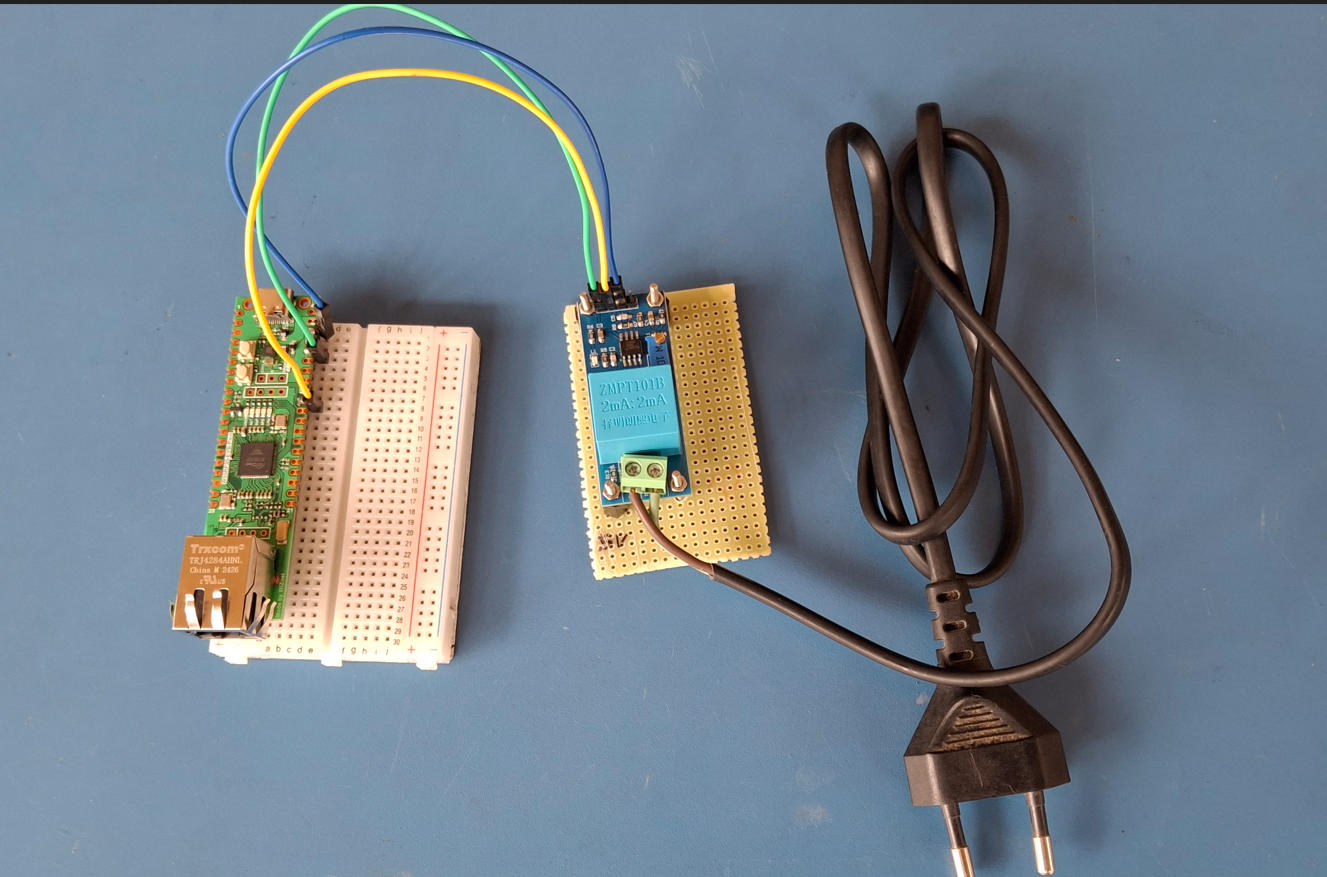[NEWS] A Breakthrough Networked Energy Monitoring System
This project streams real-time AC voltage online via the W55RP20, unlocking potential for smart energy devices.

A Breakthrough in Smart Power: The Networked Energy Monitoring System
Ever wondered how much electricity your devices are consuming right now? Thanks to maker and developer Amal Mathew, you don’t have to guess anymore. He has created a Networked Energy Monitoring System that streams real-time AC voltage data directly to the internet — powered by WIZnet’s W55RP20-EVB-Pico board. This project shines a light on the future of smart energy management.
A simple idea with big potential
At its core, the system uses a ZMPT101B AC Voltage Sensor Module to measure voltage, while the W55RP20 chip takes care of networking. The readings are sent via HTTP requests to a server and displayed live on a custom web dashboard. While the current version is a proof of concept, it opens the door to a wide range of applications — from smart appliances that optimize power use to renewable energy monitoring and advanced energy management systems.
Why W55RP20?
The W55RP20 is a clever combination of the W5500 wired TCP/IP controller and the RP2040 microcontroller (the same chip used in the Raspberry Pi Pico). This integration makes it possible to handle both data acquisition and internet communication seamlessly, without the need for additional hardware. For real-time, reliable energy data transfer, it’s an ideal solution.
Key Features at a Glance
Mathew’s prototype may be small, but it packs a surprising punch:
Real-time voltage monitoring with the ZMPT101B sensor
HTTP data transmission using simple JSON payloads
Live web dashboard at tinkererway.dev for immediate insights
Minimal hardware setup: just the W55RP20-EVB-Pico, a voltage sensor, jumper wires, and an Ethernet cable


From breadboard to browser
After soldering header pins and wiring up the sensor, Mathew calibrated the module and got the system streaming voltage data. A custom PHP script on his server processes the readings, stores them, and displays them on a clean, user-friendly interface. The result? Anyone can view real-time voltage fluctuations from anywhere in the world.
What’s next?
Today, it’s “just” about monitoring voltage. Tomorrow, it could be much more:
Smart energy devices that automatically adjust power usage
Home and business dashboards for tracking multiple devices and locations
Automated alerts for abnormal voltage spikes or outages
Integration with renewable sources like solar or wind for smarter energy balancing
This project is a great example of how compact, powerful hardware combined with accessible software tools can inspire new possibilities in energy innovation.
Curious to learn more? Visit Amal Mathew’s project page on WIZnet Maker and explore the GitHub code behind it.
